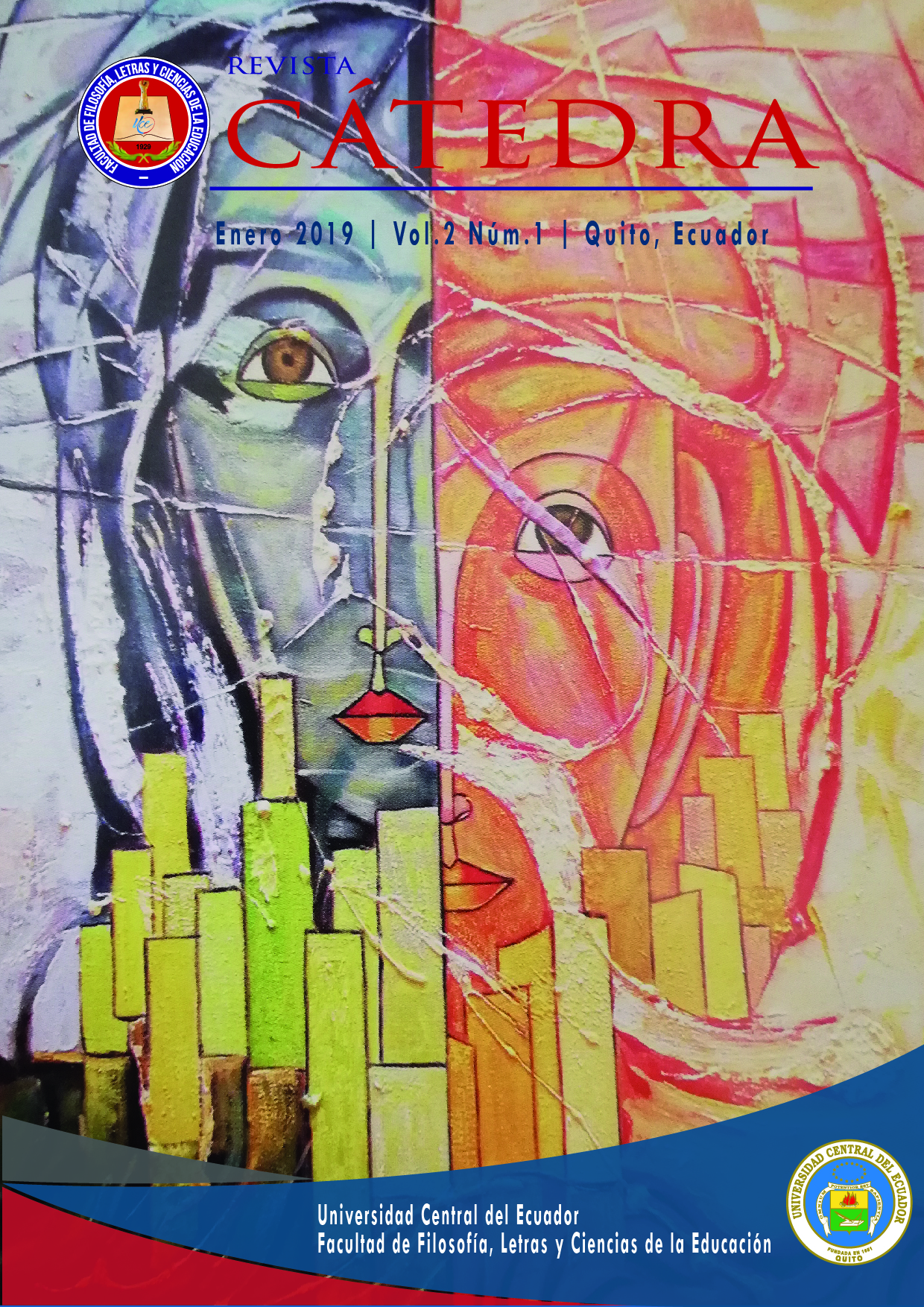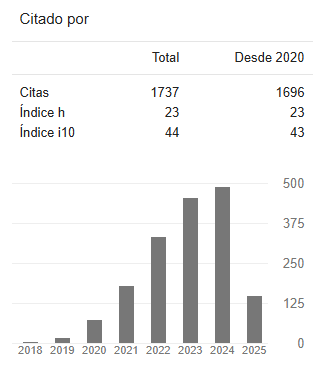The innovation in the use of language in context changes the way professors think
DOI:
https://doi.org/10.29166/catedra.v2i1.1275Keywords:
Didactic, influences, provinces, reading, thinking, training.Abstract
The following article is an expansion of a topic presented at the 3rd International Conference fortheInnovation in Education, held at Universidad Central del Ecuador (UCE). Not only is it broad but it also contains arguments that deserve to be highlighted and further examined. In the same way theanalysis of “pragmatic discourse” is an important exercise, therefore, it is aprofessor’sability to create new pedagogical strategies to improve teaching methods. Further, a thorough proposal of a training program for university instructors regarding language in context is important as well. As such, the aim of thisarticle is toelucidate how teachers, after having receivedtraining in the usage of language in context, improve their reading comprehension processes and change their thought processes with regard to their pedagogical practices.The methodology of this study focuses on a theoretical debate of the usage of language in context and employs quantitative analysis regarding teacher training of critical reading and the development of critical thinking for instructors in Pichincha, Esmeraldas, and Santo Domingo provinces. Such traininginvolvesa certain command of language in context.The questionnaire employed in this study to collect data from the analysis of a discourse through the usage of language in context revealed a 91% improvement intheteachers’ capacity for analysis. Thus, this investigation should be considered of high impact; the metacognitive questions that were posed to the teachers at the end of their training made them thinkon their reading comprehension processes and pedagogical practices
Downloads
References
Carriazo, M. (2009). Taller de Formación a Formadores. Planificaciones de talleres, [UASB] Universidad Andina Simón Bolívar.
Casado, M. (2000). Introducción a la gramática del texto (4ed.). Madrid, pp.18-20.
Cervera, A. (2011) Cómo hacer un comentario de texto. Editorial SM. Quito, Ecuador. Recuperado el 26 de enero del 2019, de https://www.amazon.es/dp/ 8467540087/ref=cm_sw_r_tw_dp_ U_x_FPVsCbYBFG0M9
Comisión de Vinculación con la sociedad, Comisión de Investigación, Comisión de Innovación, 2018, U.C.E. pp. 3-6.
Conde, X. Introducción a la pragmática. Recuperado el 2 de noviembre del 2001, de https://docplayer.es/3420908-Xavier-frias-conde-introduccion-a-la-pragmatica.html
Currículo de los Niveles de Educación Obligatoria. (2011). Ministerio de Educación y Cultura. Ecuador, p. 6.
Escandell, M. (1996). Introducción a la pragmática. Editorial. Ariel, p. 14.
Gonzales, L (2015) Aprender y enseñar el dinamismo de la comunicación discursiva, desde el Área de Lengua Castellana y Literatura. Editorial SM. Quito, Ecuador.
Gutiérrez, S. (2000). Temas, remas, focos y comentarios. Madrid, pp. 34-56.
Gascueña, M. (Productor). (18 de julio de 2010). El uso del lenguaje en contexto [diapositivas]. Quito.
Informe final del programa Centro de Excelencia de Capacitación a Maestros [CECM], 2009, pág. 33.
Lamas, O. (2003). Introducción a la tipología textual, Arcos Libros, Madrid, España: Editorial Arcos Libros p. 13
Ministerio de Educación y Cultura. (2010). Actualización y Fortalecimiento Curricular, Ecuador, p. 8.
Ministerio de Educación y Cultura. (2011a). Currículo de los Niveles de Educación Obligatoria, p. 6.
Ministerio de Educación y Cultura. (2011b). Didáctica del pensamiento crítico. (2ed.). Ecuador, p. 78.
Searle, J (1996). Una teoría de los Actos del habla. Recuperado el 2 de noviembre de 2018, p. 25 de https://app.box.com/s/siq0n4q5lqrlufh4pem0
Van Dijk, T. A. (2008). Semántica del discurso e ideología, Discurso & Sociedad, 2(1), 218-221. Recuperado el 2 de noviembre de 2018, de http://www.dissoc.org/
Zecchetto, V. (2002). La danza de los signos. Nociones de semiótica general. Quito, Ecuador: Editorial Abya Yala p. 21.









